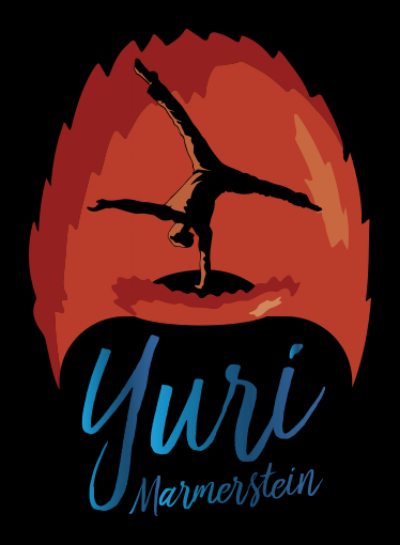Those of you who know me are aware off my math and science background prior to my life as an acrobat. Sometimes old habits die hard.
I want to take a basic concept out of algebra and apply it to a complex movement like the press to handstand.
The press is a very technical movement that requires a combination of strength, flexibility, coordination and body awareness. To make it even harder, this is all done while maintaining balance.
While I do not believe in set right and wrong ways to perform a skill there are ways to make it more mechanically efficient.
To conceptually explain this movement, it is important to know that in balance and alignment there are certain priorities. The first priority here will always be shoulders. Shoulders are a crucial link between your body and the floor or apparatus.
What we are looking for is that the arms are vertical. This means that the shoulder should be directly over the hand. If it is not, chances are the position is more difficult to hold than it needs to be. Ideally we want to spend as little time as possible in a position where the arms are not perpendicular to the floor.
How does this apply to the press? Take a look at the starting position:
Can you stack your hips directly above the hands without learning forward? Probably not unless you have amazing flexibility and the right proportions of length of arms, legs, and torso. This means that we must be in a mechanically inefficient position for some time.
Shoulder lean can be minimized by maintaining a strong base and demonstrating maximum compression in the body. The smaller you are, the less you have to compensate for a counterbalance. In contrast, the more extended your body is in the start position the more shoulder lean it will take to lift off.
In the start position you want to apply force downwards with your hands while simultaneously curling your back and actively pulling your legs closer into your body.
Now here is where the order of operations comes in: the actual lift. The goal is to extend and prioritize one part of the body at a time until we go from fully compressed to fully extended.
Here is the order: shoulders, upper back, mid/low back, hips, legs. If anything is extended early, it prematurely lengthens the lever and increases the force required to complete the movement. In addition once a mistake in the order has been made, it is very difficult to correct until the movement is complete.
Also keep in mind when I say "extend" I mean to stack the joint vertically along with the rest of the body.
Check the order:
On the way down we reverse the movement again prioritizing the arms vertical. This time the arms begin vertical(hopefully) so the goal is to maintain that as long as possible by moving the rest of the body around this lever. It is common for many people to begin the negative press by loading the shoulders first. This can build some strength but is not the best way to do it to learn proper technique. In a negative press, the shoulder angle should be the absolute last thing to break. Go as far as you can with everything else until you have to break your shoulder angle.
The concept of priority actually applies to a lot more than just the press. Please keep it in mind when working the more advanced skills.
I hope this is helpful, happy balancing!

![IMG_1351[1].PNG](https://images.squarespace-cdn.com/content/v1/52912108e4b0661bae3be968/1392597514440-9QRR1LKM6HTMHB3FB2FA/IMG_1351%5B1%5D.PNG)